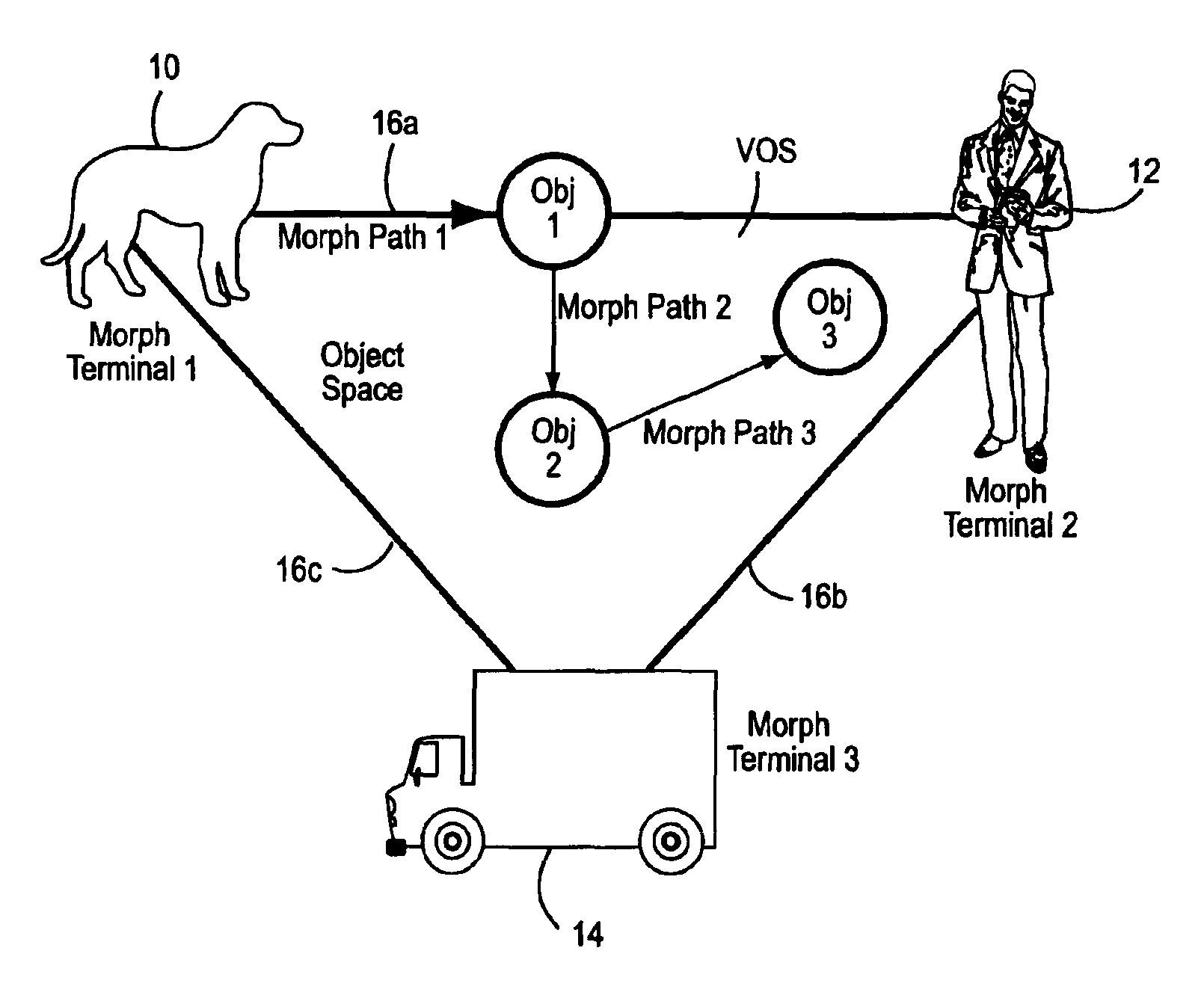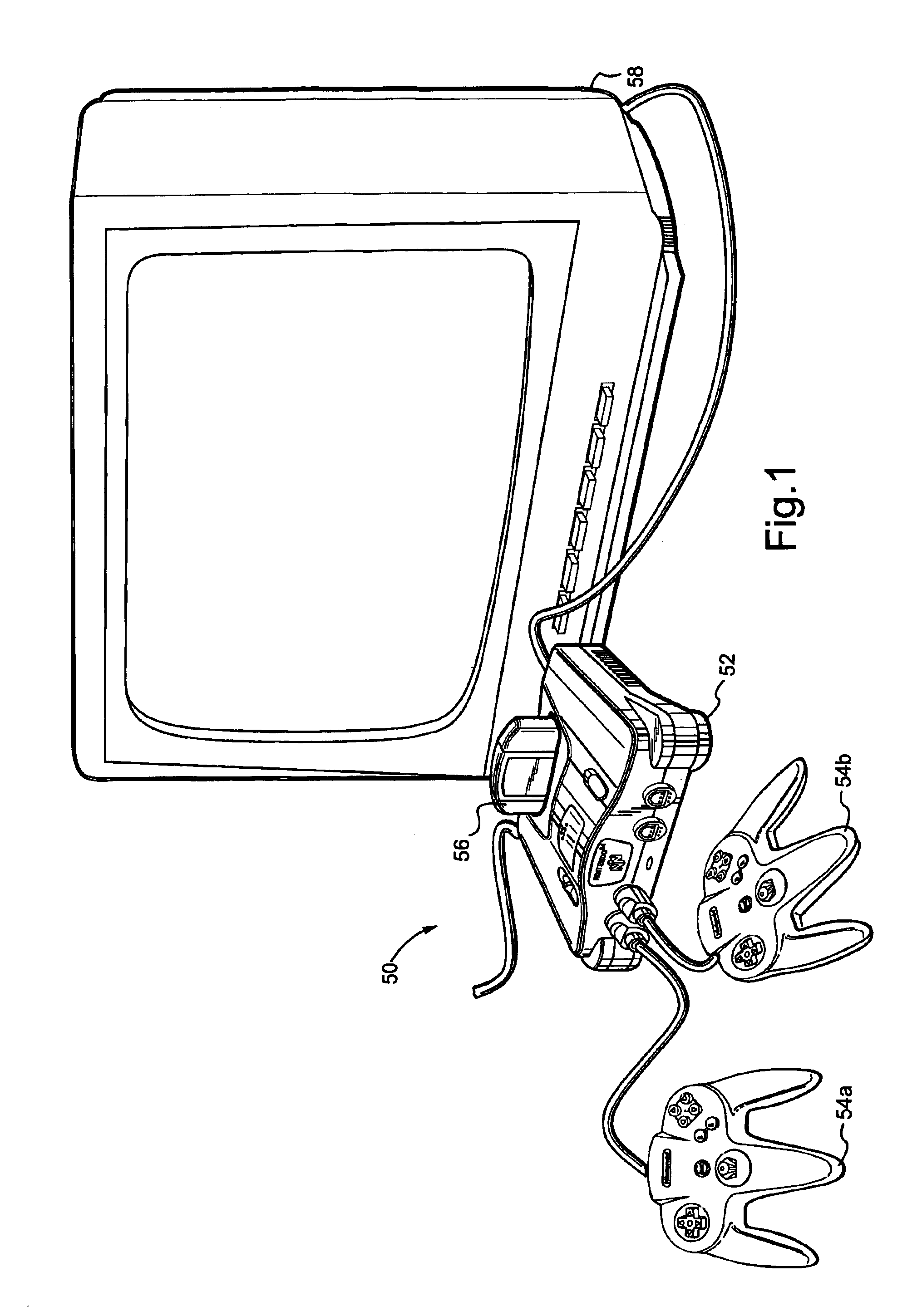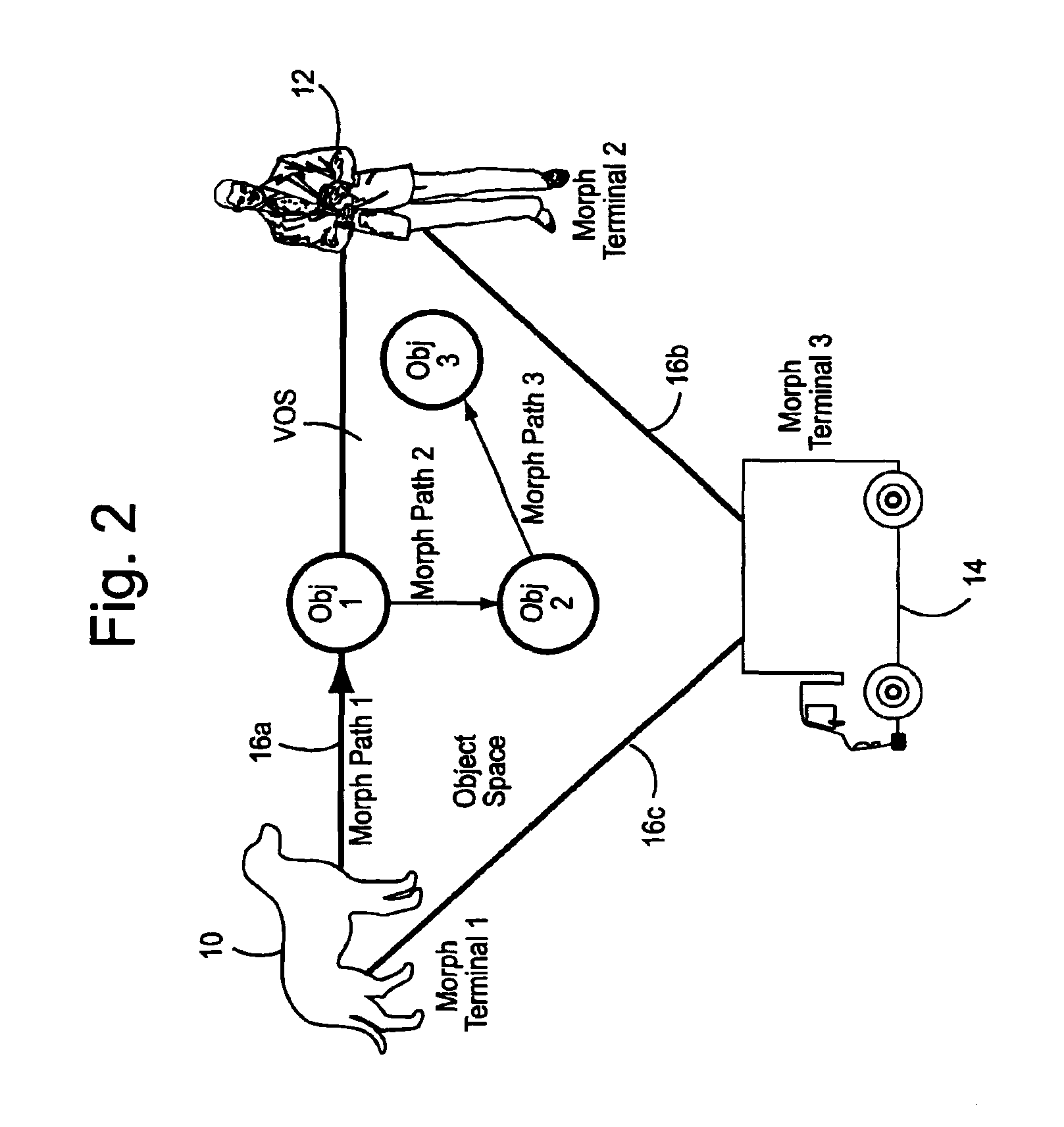Texture morphing process provided by the preferred embodiment of the present invention
a texture morphing and process technology, applied in the field of computer graphics, can solve the problems of computationally expensive texture morphing, 3d objects more interesting and apparently more complex, etc., and achieve the effects of fast and efficient real-time texture morphing algorithm, simple and reduced computations, and fast and efficient
- Summary
- Abstract
- Description
- Claims
- Application Information
AI Technical Summary
Benefits of technology
Problems solved by technology
Method used
Image
Examples
Embodiment Construction
[0021]FIG. 1 shows an example real time 3-D computer graphics display system 50 that may be used to provide realistic interactive real time 3D morphing in accordance with the present invention. The FIG. 1 example system 50 includes a NINTENDO 64® 3-D video game console 52 and associated hand controllers 54a, 54b. A cartridge 56, optical disk or other storage medium storing a software animation (video game) program is operatively connected to console 52. The console 52 is connected to a display device 58 such as a conventional home color television set or computer monitor. Console 52 includes a 3D graphics engine that can render 3D animation on display 58 in real time response to user manipulation of controllers 54a, 54b. The software within cartridge 56 controls console 52 to display a sequence of animated video frames on display 58. Human players may operate hand controllers 54a, 54b to cause, under control of software within game cartridge 56, game characters to morph interactivel...
PUM
 Login to View More
Login to View More Abstract
Description
Claims
Application Information
 Login to View More
Login to View More - R&D
- Intellectual Property
- Life Sciences
- Materials
- Tech Scout
- Unparalleled Data Quality
- Higher Quality Content
- 60% Fewer Hallucinations
Browse by: Latest US Patents, China's latest patents, Technical Efficacy Thesaurus, Application Domain, Technology Topic, Popular Technical Reports.
© 2025 PatSnap. All rights reserved.Legal|Privacy policy|Modern Slavery Act Transparency Statement|Sitemap|About US| Contact US: help@patsnap.com



